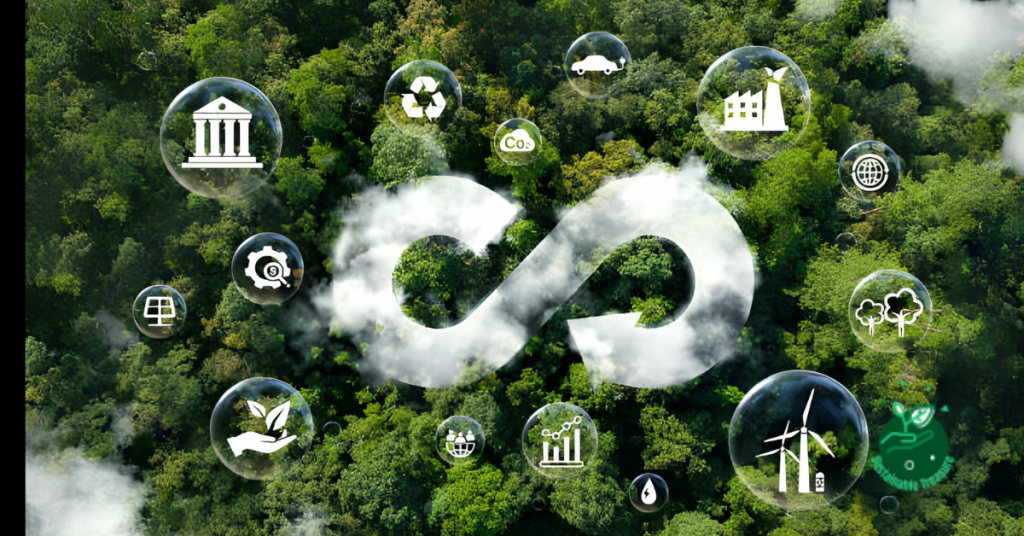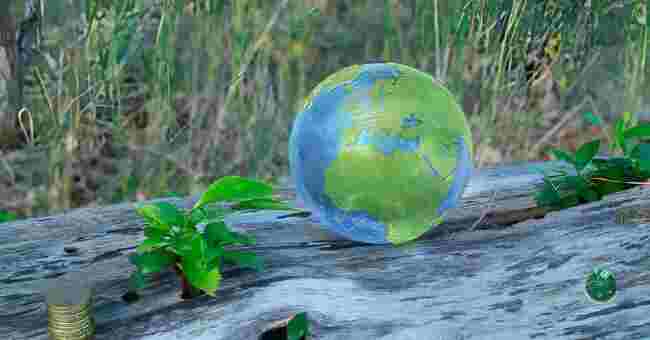Table of Contents
Is biodiversity important for the economy? Absolutely – our economic systems fundamentally depend on services provided by nature to function. I saw this reliance firsthand when visiting my uncle’s mango farm as a child.
Rising temperatures and erratic rainfall drastically reduced yields year after year, forcing him to sell his property due to debts.
This personal experience revealed the vulnerability of livelihoods across Africa to climate impacts and environmental decline. Only later did I realize such connections shape economies globally too.
In this guide, we’ll cover why biodiversity matters economically, how losing species and ecosystems can impact economies, what policies and investments are needed to halt biodiversity loss, and why a sustainable future requires conservation action today.
Let’s dive in!
What is Biodiversity and Is biodiversity important for the economy?
Biodiversity refers to all the variation we see in nature, encompassing the incredible diversity of genes, species, and ecosystems on Earth.
It includes common species we interact with daily like crops, livestock, trees, fish, insects etc as well as less visible microscopic organisms, fungi, and more.
While insects like dung beetles may not seem economically useful at first glance, they provide crucial ecosystem services by recycling nutrients and waste material.
Beautiful animals like tigers or unusual plants can seem irrelevant to economies too. But biodiversity underpins much of the food we eat, raw materials we use, medicines we take and even regulates our climate.
Let’s breakdown some key reasons it matters:
- Crucial Ecosystem Services
- Sources of Food, Materials and Medicine
- Recreation and Tourism
Crucial Ecosystem Services
Healthy ecosystems like forests, wetlands, coral reefs provide essential services that support our economies through:
- Purifying air
- Filtering and storing fresh water
- Controlling floods, reducing disaster risk
- Pollinating crops
- Controlling pests
- Decomposing waste
- Maintaining fertile soils
By contributing trillions per year in free services, biodiverse ecosystems subsidize economic success.
Sources of Food, Materials and Medicine
Thriving ecosystems and species diversity provide vital resources like:
- Food from crops, orchards, livestock and fisheries – globally about 50,000 species are edible!
- Materials like timber, fibers, dyes from millions of plants.
- Medicines derived from nature – at least 28,187 plant species have known medicinal uses.
Recreation and Tourism
Pristine habitats allow for major recreation and tourism opportunities that generate billions annually like:
- Scuba diving on coral reefs
- Safari tours and cruises to see charismatic wildlife
- Hiking, camping and adventure sports in forests and mountains
Preserving beautiful, rare species preserves options for recreation too. Who doesn’t want to glimpse amazing creatures like tigers, elephants or whales one day?
The Economic Impacts of Biodiversity Loss
Unfortunately, scientific assessments show biodiversity is declining faster than any time in human history.
Due to factors like habitat destruction, overexploitation, pollution, and climate change, around 1 million animal and plant species face extinction now.
What does this rapid erosion of nature mean for our economies?
Let’s overview some major risks and costs:
| Impacts of Biodiversity Loss | Effects on Economy |
|---|---|
| Declines in natural capital assets | Less bio inspired innovation and biotechnology breakthroughs |
| Loss of ecosystem services | More disasters, less water and food availability, poorer health |
| Increased operational costs | Supply chain disruption from resource scarcity, regulation |
| Uncertainty and instability | Lower resilience to unexpected shocks like extreme weather or pandemics |
| Lower innovation | Less bioinspired innovation and biotechnology breakthroughs |
To showcase the scale of benefits we lose as biodiversity vanishes, here are some examples:
Fisheries Collapse
Once thriving fisheries have fully collapsed in several regions like the North Atlantic and North Sea due to decades of overfishing. Global marine catches plateaued over 25 years ago as stocks declined.
These fisheries generated over $200 billion annually and employed millions before crashing from a lack of resilience. Their collapse ripples across coastal economies.
Invasive Species Costs
Invasive species often thrive as native biodiversity falls. These pests cost the US $120 billion per year in damages and control efforts according to US federal estimates.
They disrupt agriculture, forestry and more by outcompeting native species. Preventing biodiversity loss could limit opportunities for invasive spread.
Reduced Pollination
Up to 35% of global food crop production depends on animal pollination but key pollinators like bees are threatened. Simulations suggest pollinator loss could cost $260-500 billion/year through lower crop productivity. Preserving pollinator diversity boosts food security and rural livelihoods.
This is just a snippet of mounting evidence on the economic risks of allowing biodiversity erosion. Next let’s overview what policies and investments could change course.
Policies and Investments Needed to Protect Biodiversity
Transforming economic systems to account for nature’s contributions is vital to meet development goals and conserve biodiversity long-term.
While governments can pass regulations, businesses, financial institutions and consumers ultimately need to transition supply chains towards sustainability.
Actions needed span:
Government Policy Levers
- Expanding protected areas
- Tax incentives for conservation
- Payments for ecosystem services
- Strict bans on illegal logging and wildlife trade
- Mainstreaming biodiversity protection into decisions
Business Initiatives
- Sustainable sourcing policies
- Transparent supply chains
- Investments in reducing environmental impacts
- Support for smallholders & sustainable agriculture
Financial Innovations
- Biodiversity offsets
- Green and blue bonds
- Impact investing
- Natural capital accounting
Technology Breakthroughs
- Biomimicry and bio-inspired design
- Gene banking, AI and sensors for monitoring ecosystems
- Climate change mitigation tech like renewable energy, carbon capture
Ultimately economics needs to account for the value of natural systems – or risk catastrophic consequences from their loss!
A Sustainable Future Depends on Conservation Now
Projections show globally biodiversity will continue rapidly declining under business-as-usual scenarios. Already partial losses have disrupted ecosystems enough to increase pandemic risk according to medical journals like Nature and The Lancet.
Climate change further threatens ecosystem stability through raising temperatures, shifting seasons and increasing extreme weather globally.
But many conservationists argue we can still change course towards an “eco-economy” that values biodiversity’s contributions and prevents irreversible erosion.
The coming decade represents a critical window where conservation action could still halt biodiversity loss and avoid worst-case scenarios. But rapid, ambitious efforts are needed across sectors globally to protect habitats, reform policies and embed sustainability across supply chains.
Ultimately biodiversity underpins modern society itself through services like water purification, waste management, climate regulation and disaster mitigation.
Our economies rely on the genetic library of millions of species too for innovation in fields like medicine, biotech, agriculture and biomimicry. Diverse ecosystems even provide mental health benefits and cultural identity. Protecting nature is protecting the future of human prosperity and well-being.
FAQs

Image: Credit Sansert Sangsakawrat
What Are 7 Reasons Why Biodiversity Is Important?
Biodiversity, or the incredible variety of genes, species, and ecosystems on Earth, drives economic growth and human prosperity through:
- Providing key ecosystem services like air and water purification, flood control, and waste management
- Supporting food production via nutrient cycling, soil formation, and resilient croplands
- Offering sources of medicine and biotechnology breakthroughs – at least 28,187 plants have medicinal uses
- Enabling recreation and tourism opportunities that connect people with nature and drive spending
- Supporting overall ecosystem resilience to shocks like extreme weather, fires, or climate change through genetic and species adaptations
- Providing cultural and inspirational benefits – biodiverse landscapes often hold spiritual significance while nature inspires art, music, and innovation
- Maintaining the planet’s climate-regulating systems via carbon sequestration and temperature regulation provided by forests, oceans, and soils
Which Of The Following Is An Economic Benefit Of Biodiversity?
All of the following offer key economic benefits derived from biodiverse ecosystems globally:
- Boosted agricultural productivity from healthy soils and pollination
- Expanding recreation and tourism opportunities that connect visitors with nature
- Improved waste and water management from nutrient cycling processes
- Greater resilience to disasters and climate impacts through preserved ecosystems
- Potential innovation pipelines from bio-inspired design or nature-based solutions
In short, biodiversity underpins modern economic systems while directly generating trillions in services annually.
What Is The Relationship Between Biodiversity And Economic Development?
Biodiversity and ecosystem health provide the foundation for sustained economic growth and human development through “natural capital” assets that boost productivity. However, poor development choices often degrade habitats and drive biodiversity loss – limiting future growth opportunities through depleted nature’s contributions.
A sustainable “eco-economy” approach sees conservation and development as interlinked. It focuses policies on alleviating poverty, investing in green infrastructure, removing perverse subsidies, mainstreaming biodiversity protection across sectors, and more. This balanced pathway can meet development needs while preserving biodiversity globally long term.
What Is The Importance Of Biodiversity?
Biodiversity is fundamentally important for global food, health and economic security. The incredible range of life on our planet keeps ecosystems functioning, adaptable and resilient. It provides sources of nutrition, medicine, materials, innovation and culture too.
However, according to the IUCN Red List index, biodiversity is declining faster than any time in human history now. Up to 1 million species face extinction threats from factors like habitat loss, hunting, and climate impacts.
This erosion undermines basic building blocks of modern civilization. Urgent conservation action is needed to maintain biodiversity’s critical contributions.
How Do Humans Benefit From Biodiversity?
Humans derive immense economic, health, and cultural benefits from thriving biodiversity globally through:
- Water, air, soil purification from landscapes that generate trillions in free ecosystem services
- Climate and disease regulation from preserved habitats
- Recreation, tourism and spiritual connections with nature that drive spending and satisfaction
- Sustainable food from diverse crops, livestock, and fisheries that provide nutrition
- Materials like timber, fibers used in countless industries on a daily basis
- Potential scientific breakthroughs from bio-inspired innovation or nature-based solutions across sectors
Our societies depend on biodiversity – yet its rapid erosion now threatens our collective wellbeing and prosperity long term.
What Are The 3 Important Aspects Of Biodiversity?
The three core, interlinked aspects of biodiversity include:
Genetic diversity: The range of genetic makeups and traits between individual species and within populations that drives adaptability and evolutionary potential.
Species diversity: The incredible range of distinct species, from large mammals to microscopic organisms that inhabit the planet across intricate food webs.
Ecosystem diversity: The complex communities and interactions between living organisms and the physical environment that provide habitats and public goods.
Together these three layers of life work in synchrony to perpetuate conditions for life on Earth. Loss in any dimension can undermine resilience.
What Is An Example Of A Biodiversity?
The Western Ghats mountain range in India showcases exceptionally high biodiversity that drives economic activity locally and globally.
This biodiversity hotspot is home to 139 mammal species, 508 bird species, 179 amphibian species, and thousands more distinctive plants, fungi, insects and organisms – many found nowhere else on Earth.
These forests provide water to 250 million people while driving horticulture trade, tourism and more. Over 30 million people rely directly on their ecological processes too.
This biodiverse region generates billions in services yearly while containing unique, endemic species.
What Are Three Ways To Protect Biodiversity?
Expert consensus identifies three key levers for effective biodiversity conservation globally:
- Habitat preservation via protected areas, ecological corridors and national parks paired with landscape level land-use planning
- Species-specific conservation programs like guarding turtle nesting sites or operating rhino sanctuaries
- Policy reforms that embed biodiversity into decisions like planning processes or subsidies that incentivize sustainable land management
Combined these interventions at global to local levels provide the best hope for retaining critical habitat and preventing further species extinction worldwide. But rapid action is essential as threats accelerate.
Conclusion
In closing, biodiversity forms the living backbone of successful economies – yet this critical natural capital is declining across the world now.
My journey helping communities protect habitats has shown that with visionary leadership, we can prevent further species and ecosystem loss.
The coming decade represents our best window to enact nature-based solutions, embed biodiversity’s value into decisions, and spark a conservation movement globally.
We all have a role to play through sustainable choices and advocacy. Our shared future depends on learning to preserve the incredible tapestry of life that sustains us.
The time for action is now.



